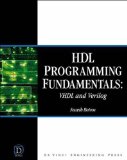Difference Between Verilog and VHDL
Verilog and VHDL are Hardware Description languages that are used to write programs for electronic chips. These languages are used in electronic devices that do not share a computer’s basic architecture. VHDL is the older of the two, and is based on Ada and Pascal, thus inheriting characteristics from both languages. Verilog is relatively recent, and follows the coding methods of the C programming language.
VHDL is a strongly typed language, and scripts that are not strongly typed, are unable to compile. A strongly typed language like VHDL does not allow the intermixing, or operation of variables, with different classes. Verilog uses weak typing, which is the opposite of a strongly typed language. Another difference is the case sensitivity. Verilog is case sensitive, and would not recognize a variable if the case used is not consistent with what it was previously. On the other hand, VHDL is not case sensitive, and users can freely change the case, as long as the characters in the name, and the order, stay the same.
In general, Verilog is easier to learn than VHDL. This is due, in part, to the popularity of the C programming language, making most programmers familiar with the conventions that are used in Verilog. VHDL is a little bit more difficult to learn and program.
VHDL has the advantage of having a lot more constructs that aid in high-level modeling, and it reflects the actual operation of the device being programmed. Complex data types and packages are very desirable when programming big and complex systems, that might have a lot of functional parts. Verilog has no concept of packages, and all programming must be done with the simple data types that are provided by the programmer.
Lastly, Verilog lacks the library management of software programming languages. This means that Verilog will not allow programmers to put needed modules in separate files that are called during compilation. Large projects on Verilog might end up in a large, and difficult to trace, file.
Summary:
1. Verilog is based on C, while VHDL is based on Pascal and Ada.
2. Unlike Verilog, VHDL is strongly typed.
3. Ulike VHDL, Verilog is case sensitive.
4. Verilog is easier to learn compared to VHDL.
5. Verilog has very simple data types, while VHDL allows users to create more complex data types.
6. Verilog lacks the library management, like that of VHDL.
- Difference Between Sony Cybershot S Series and W Series - December 22, 2012
- Difference Between Samsung Galaxy S3 and iPhone 5 - December 21, 2012
- Difference Between Samsung Galaxy S2 (Galaxy S II) and Galaxy S 4G - December 20, 2012


what are the major differences between vhdl and verilog
Verilog is case sensitive….
Vhdl is not case sensitive….
how to identify whether it (program) is in VHDL or Verilog
Verilog vhdl
1. Starts with Module 1. Starts with entity
Vhdl program is starts from library ieee;
Use ieee.std_logic_1164_all;
Then entity declaration and so on…..
In verilog program its starts from module….
A nice and clear difference…
its good one
how to write testbench in verilog hdl please tell me.
Very nice difference
Thanks it’s good